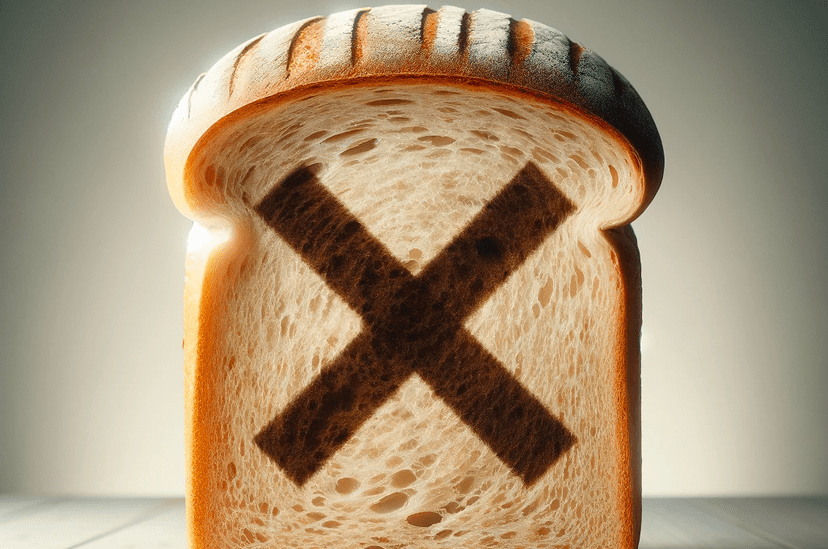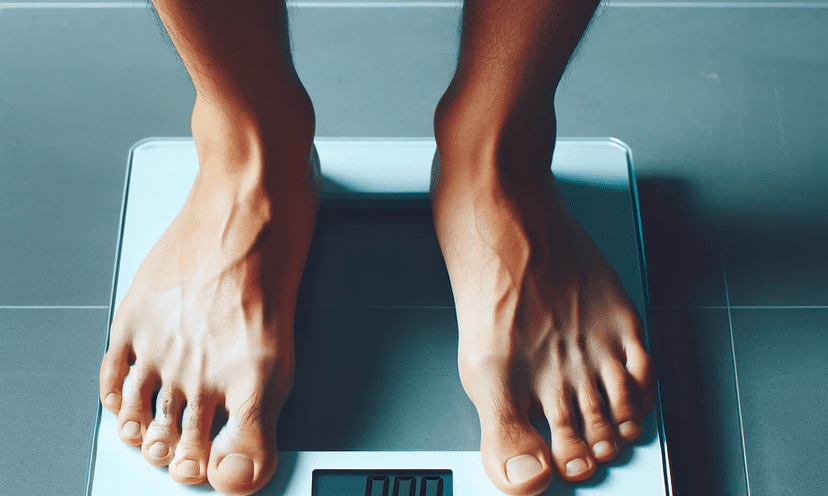How Much Should I Walk to Lose 30 Pounds?(answered)

Understanding Weight Loss Through Walking
Walking is a fantastic form of exercise that can help with weight loss and general health improvements. When embarking on a fitness journey with a goal to lose a significant amount of weight, understanding the basics of weight loss through walking is critical.
For successful weight loss, our bodies need to be in a calorie deficit, which simply means burning more calories than we take in. The equation is quite straightforward - if you eat fewer calories than you burn, you will lose weight. But how does walking fit into this equation?
Walking burns calories. The exact number varies depending on your weight, walking speed, and duration of the walk. On average, an individual burns around 100 calories per mile walked.
In the context of weight loss, it is essential to set realistic weight loss goals. A healthy rate of weight loss is typically considered to be 1-2 pounds per week. This equates to a caloric deficit of about 500-1000 calories per day. Hence, walking can be used as an effective tool to achieve this goal.
Given that, let's delve into calculating the calories burned while walking. Although the exact amount of calories used by your body when you are walking can vary, there's a general formula that can give you a good approximation:
Calories burned per minute = (0.035 * body weight in kg) + ((Velocity in m/s ^ 2) / Height in m)) * 0.029 * body weight in kg
In simpler terms, the speed and weight of the individual are the primary factors that affect the number of calories burned when walking.
By incorporating regular walking into your lifestyle and coupling it with sensible eating habits and a balanced diet, you can contribute to the creation of the calorie deficit required to achieve significant weight loss.
In conclusion, walking, when coupled with a healthy diet, is an effective mechanism for weight loss. So, when you ask "how much should I walk to lose 30 pounds", the answer isn't a simple number. Factors such as your current weight, diet and walking pace play a part. The focus should be on creating and maintaining a calorie deficit to reach your personal weight loss goals.
Developing a Walking Routine
To lose 30 pounds through walking, you must develop a consistent and effective walking routine. What counts is not only the number of steps you take but also the intensity of your workouts and the dedication and consistency you bring to them.
Creating a Consistent Walking Schedule
Firstly, your walking workouts need to become an integral part of your daily life. Ideally, you should aim to walk five days a week.
-
Start slowly, particularly if you're new to regular exercise. Walk at a pace that feels comfortable for you, but try to go for at least 30 minutes.
-
Gradually increase the duration of your workouts, building up to 60 minutes or more over time.
Remember, consistency is key. Establishing a regular walking habit might be challenging at the outset, but it will become more automatic and enjoyable over time.
Incorporating Intensity and Variety in Walks
If your resting heart rate is repeatedly elevated above its base level during your walks, this is a good sign that you are maintaining a moderate level of intensity. This helps maximize calories burn, and hence, promotes weight loss.
-
Vary your walking speed during your workout. For instance, you can walk at a moderate pace for five minutes, walk briskly for a minute, and repeat. This method, known as interval training, can enhance calorie burning.
-
Add inclines to your walks. Walking uphill forces your muscles to work harder, which results in additional calorie burn.
Tracking Progress and Staying Motivated
Monitor the progression of your walking workouts to stay motivated.
-
Use a pedometer or a fitness tracker to measure the number of steps you take each day. Try to reach or exceed the commonly advised 10,000 steps a day.
-
Write a workout diary. Note down the duration, speed, and intensity of each walking session.
-
Evaluate your progress regularly. Have you increased the length of your workouts? Are you walking more quickly or adding more intense intervals? Have you lost any weight or inches, or do your clothes fit more loosely?
Such affirming signs show you're making positive strides and will in turn, keep you feeling motivated.
Remember, achieving your goal to lose 30 pounds is a marathon, not a sprint. Make your walking routine a lifestyle change, and you will not only get rid of the unwanted pounds but also maintain your desired weight in the long haul. Your walking routine is an essential part of your journey to long-term health and well-being.
Complementing Walking with Lifestyle Changes
To lose 30 pounds, walking is instrumental but should be complemented with other lifestyle changes. A holistic approach to weight loss ensures that your efforts are sustainable and yields maximum results. This approach should encompass adjustable dietary habits, rest and incorporating a blend of physical activities that go beyond walking.
Balancing Diet for Optimal Weight Loss
Our body draws its energy from the food we consume. Therefore, what you eat influences your journey towards losing 30 pounds in significant ways. A balanced diet is pivotal in promoting weight loss while sustaining our bodies with the essential nutrients needed for optimal functionality.
Prioritize protein in your meals. Protein boosts metabolism, reduces appetite, and aids in fat burning. Whole eggs, fish, lean meats, and legumes are excellent sources of protein. It is also essential to incorporate a substantial amount of fruits and vegetables into your diet. They are rich in fiber, antioxidants, and can increase the feeling of fullness.
Another essential aspect of a balanced diet for weight loss is portion control. Monitor your meal proportions keenly to prevent overeating. Ensure the calorie count in your food intake is less than what you expend during your activities hence calling for the spotlight onto calorie deficit.
Whole grains and plant proteins are highly recommended as they contain essential nutrients and fiber to keep you feeling fuller for longer hence curbing overeating. As you adapt to these dietary changes, it is also crucial to limit intake of processed foods and high sugar beverages as they are typically high in calories and minimal in valuable nutrients.
Importance of Rest and Recovery
Weight loss is not derived from continuous physical exertion without proper rest. Rest and recovery contribute immensely to your weight loss journey. Our bodies typically burn calories even at rest, with the rate being significantly high during deep sleep, this is referred to as Basal Metabolic Rate.
Sleep deprivation can interfere with the body's ability to control appetite, leading to overeating. It also disrupts the proper functioning of insulin, hence increasing fat storage. Experts recommend 7-9 hours of sleep for healthy adults. In addition to enough sleep, taking off days from intense workouts helps your body to repair and grow stronger.
Adding Strength Training and Flexibility Exercises
While the role of walking in weight loss is vital, the addition of strength and flexibility training exercises accentuates weight loss and improves general body health.
Strength workouts increase muscle mass which in turn boosts your metabolism. This leads to a higher Resting Metabolic Rate (RMR) meaning you end up burning more calories while at rest. Basic exercises like weight lifting, resistance band workouts or body weight exercises like squats and push ups can be instrumental in strength training.
Flexibility exercises like yoga, Pilates or simple stretch workouts enhance your body's flexibility and range of motion, increase blood flow to your muscles and can contribute to better balance and coordination. Notably, these exercises also aid in muscle recovery post walking or strength training workouts.
Remember, the walk towards losing 30 pounds might seem long, but every step you take coupled with the right lifestyle changes contributes to your goal. Weight loss is a journey, and every individual's journey is unique. Patience, consistency and the right balance of diet, rest and exercising will reward you with the healthy body you strive for.
In Summary
In this blog post, we have discussed the important role walking plays in weight loss. The main takeaway is that walking can contribute to a calorie deficit, which is the primary mechanism by which weight loss occurs. Coupling regular walking with sensible eating habits and a balanced diet can lead to significant and sustainable weight loss.
The post also emphasized realistic goal setting and outlined a plan to develop a consistent and effective walking routine, including tips for enhancing intensity and tracking progress. Furthermore, it advocated for a holistic approach to weight loss, encompassing appropriate dietary habits, rest and recovery, and a blend of physical activities that go beyond walking.
From these insights, here's an action plan to accelerate your journey towards losing 30 pounds:
-
Understand and embrace the concept of calorie deficit. Set realistic weight loss goals considering your current weight, diet, and physical activity level.
-
Develop a consistent walking routine by creating a regular schedule that suits your lifestyle. Increase duration and intensity gradually over time.
-
Track your progress using a pedometer or a fitness tracker. Ensure your get at least 10,000 steps a day.
-
Enhance your diet by prioritizing protein, fruits and vegetables, and carefully monitoring your meal proportions. Limit the intake of processed foods and high-sugar beverages.
-
Remember the importance of adequate rest and recovery. Aim for 7-9 hours of sleep per night and incorporate regular rest days into your workout schedule.
-
Complement your walking routine with strength training and flexibility exercises to boost your Resting Metabolic Rate (RMR) and enhance muscle recovery.
By implementing these steps into your routine, you'll be well on your way towards achieving your weight loss goals. Remember, patience, consistency and the right balance between diet, rest and exercise are key to maintaining a healthy body.
![Does a 400 and 600 Calorie Diet Plan Help Weight Loss?[ANSWERED]](https://img.imageboss.me/onestep/width/828/format:auto,quality:80/assets/site/blog/does-a-400-and-600-calorie-diet-plan-help-weight-loss.png)
![How Many Calories Does 10,000 Steps Burn? [ANSWERED]](https://img.imageboss.me/onestep/width/828/format:auto,quality:80/assets/site/blog/how-many-calories-does-10000-steps-burn.png)









